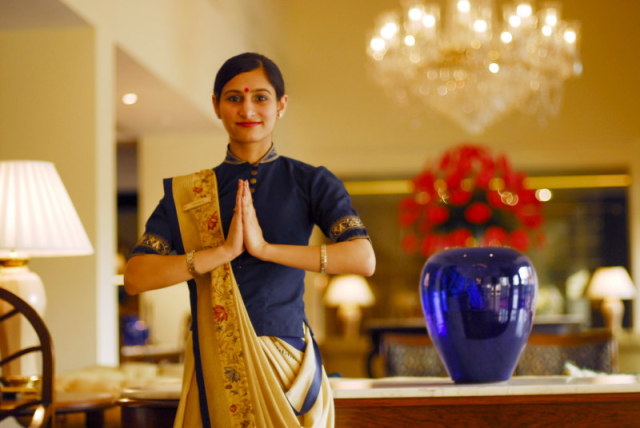Namaste, sometimes spoken as Namaskar and Namaskaram, is a customary Hindu greeting. It is found on the Indian subcontinent, Southeast Asia and among the Indian diaspora worldwide. The gesture is widely used in the parts of Southeast Asia where Indian religions are strong. It is used both for greeting and leave-taking.
Namaste is usually spoken with a slight bow and hands pressed together, palms touching and fingers pointing upwards, thumbs close to the chest.The standing posture incorporating it is Pranamasana.
Namaste may also be spoken without the gesture, or the gesture may be performed wordlessly.
The term namas is found in the Vedic literature. It is an expression of veneration, worship, reverence, an "offering of homage" and "adoration" in the Vedic literature and post-Vedic texts such as the Mahabharata.
In Hinduism, it also has a spiritual import reflecting the belief that "the divine and self is same in you and me", and connotes "I bow to the divine in you". According to sociologist Holly Oxhandler, it is a Hindu term which means, "the sacred in me recognizes the sacred in you".

